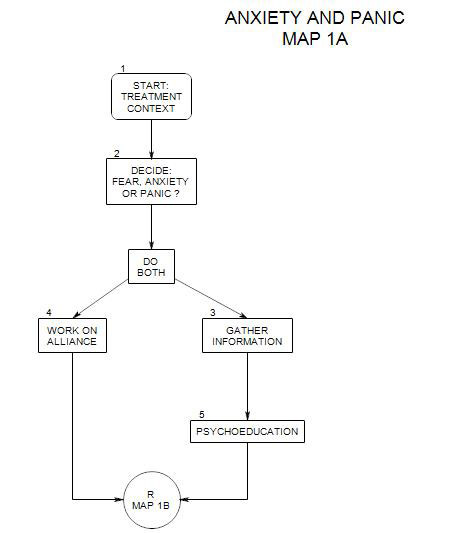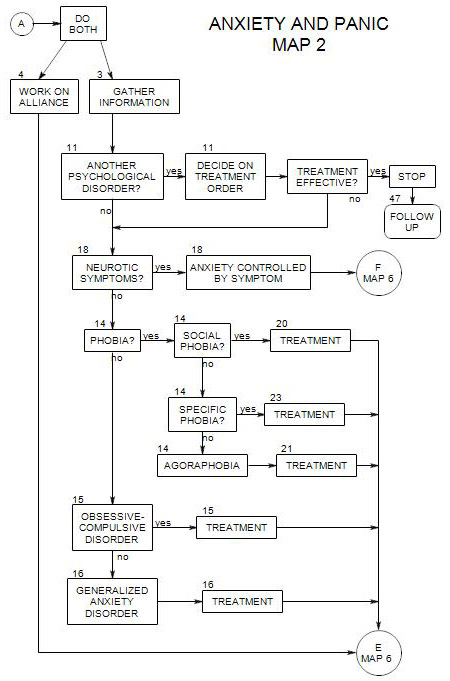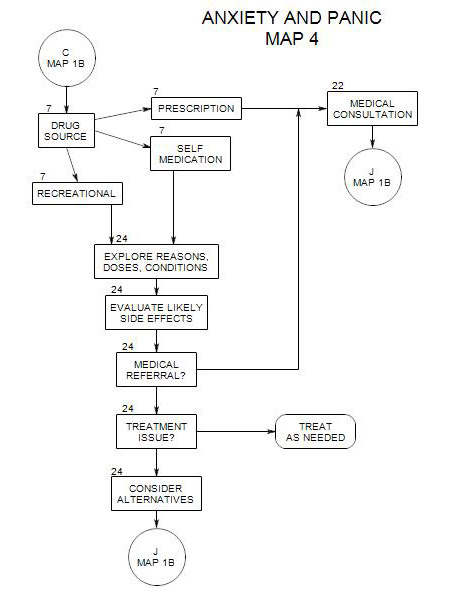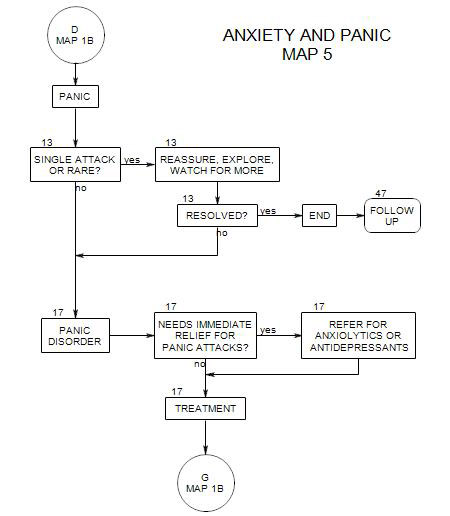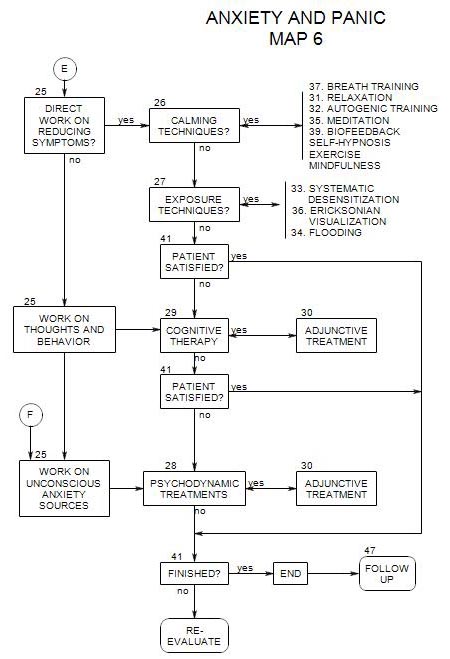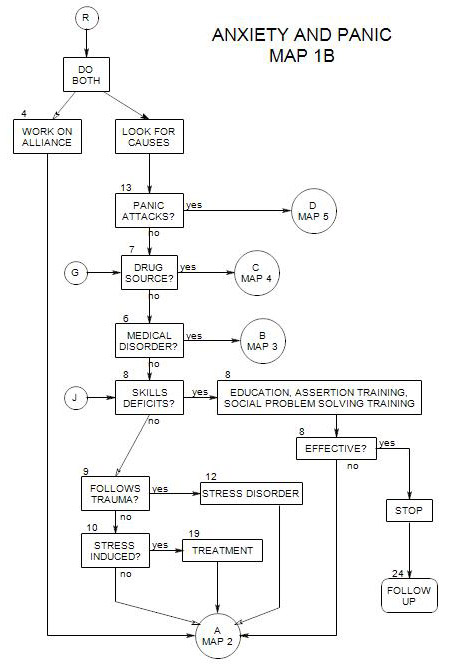
SECTIONS: 4 | 6 | 7 | 8 | 9 | 10 | 12 | 13 | 19 | 24
-
Follows Section 3 on Map 1A
Often a person’s anxiety is compounded by his/her evaluation of it and theory about it. Then the person is not only dealing with panic attacks or anxiety, but also with the idea that there is something very wrong with him/her for having them. For many people, being anxious is associated with feeling helpless and crazy.
A person can find great relief in learning about the disorder, its common sources, etc., to make it seem more natural. A variety of techniques can be used here. Examining antecedents make the anxiety seem reasonable. Family history gives a context that suggests that the person’s fears were presented as a normal part of life or were natural consequences of the person’s life experiences. A discussion of the purpose of fear and anxiety can also normalize an unpleasant emotional reaction. It is especially helpful to suggest, either directly or indirectly, that the person can work toward anxiety reduction and can expect some success in a reasonable period of time.
A psychoeducational approach can go so far as to lay out the entire treatment plan for the patient, to the extent that it can be predicted, including approximate times to accomplish phases, types of interventions, possible referrals for medication or other services, etc.
The more the patient knows, the more he/she can be an active collaborator in the treatment process.
A variety of topics can be addressed, depending on the person’s prior lack of information or misinformation, including-
- a definition of anxiety.
- normal reactions to anxiety.
- likely sources of anxiety
- the purpose of anxiety.
- physiological reactions [nervous system, heart rate, breathing, sweating].
- nervous behaviors.
Additional fears can also receive attention; fears of-
- going crazy.
- losing control of oneself.
- nervous collapse.
- heart attack.
You may even simulate some of the symptoms of anxiety in the office, once the person is comfortable with you, as a demonstration that they are manageable and don’t lead to catastrophe. See “Working directly-“, in Section 17.
A pamphlet on various anxiety disorders [generalized anxiety disorder, OCD, panic disorder, PTSD, social phobia] can be down-loaded from the NIMH web site [nimh.nih.gov – health information – anxiety disorders]. You might offer part of it to a patient for its informational content.
References:
Tuschen and Feigenbaum, 1997, pp. 33- 37.
Rapee, Craske and Barlow, 1996, pp. 309-322
